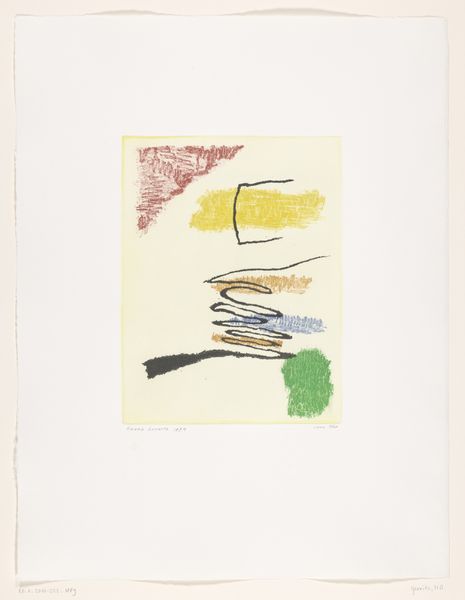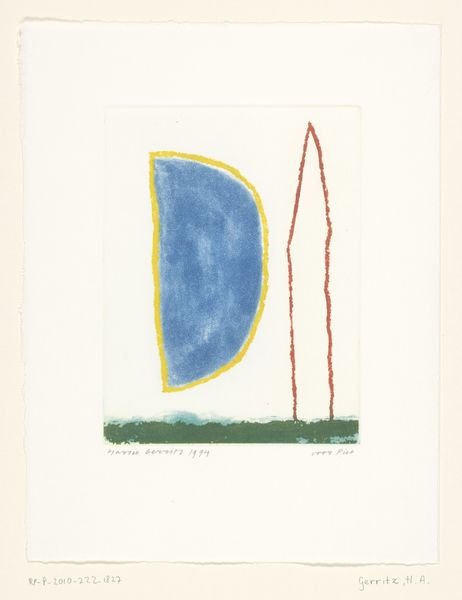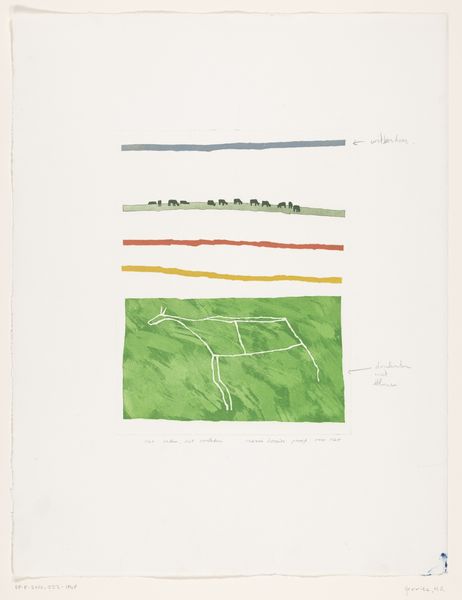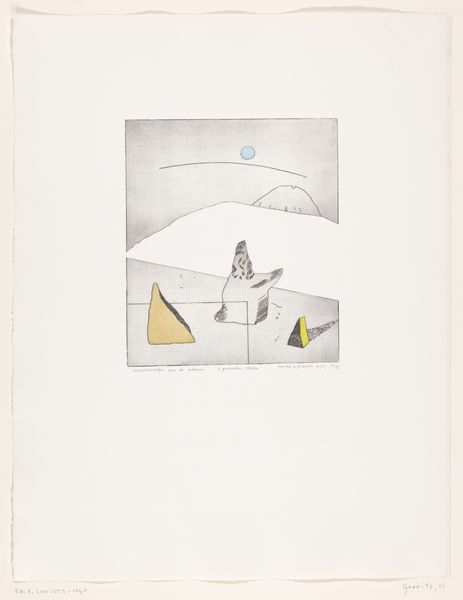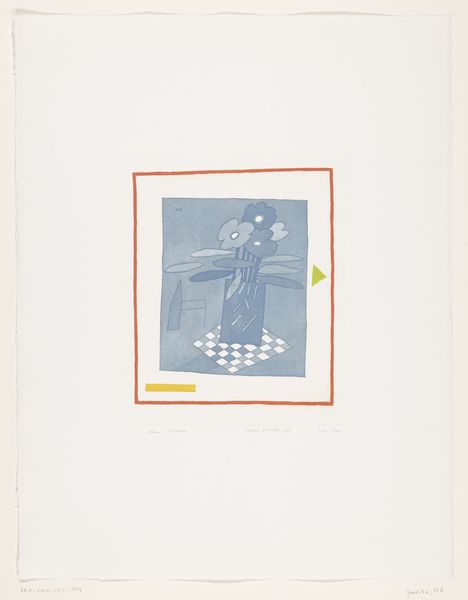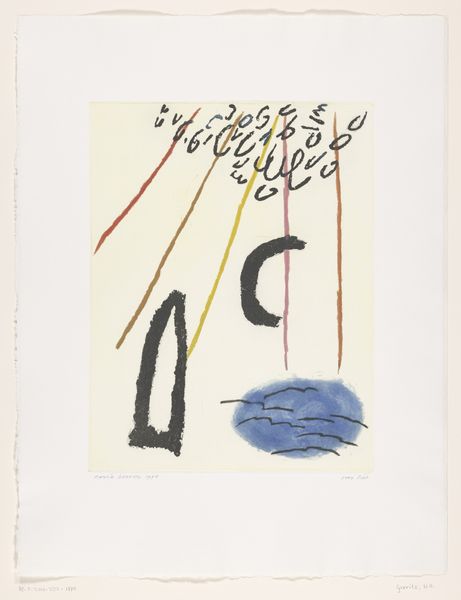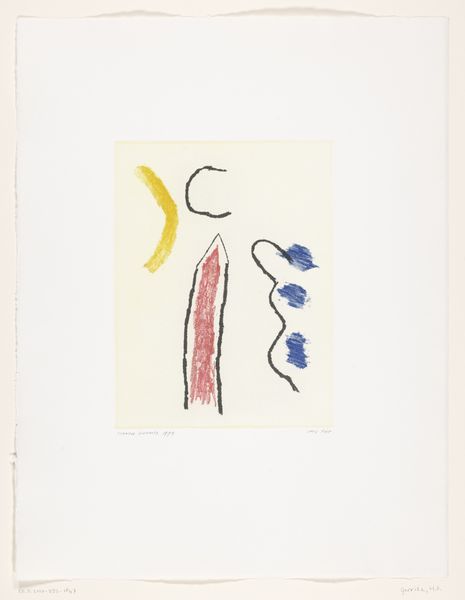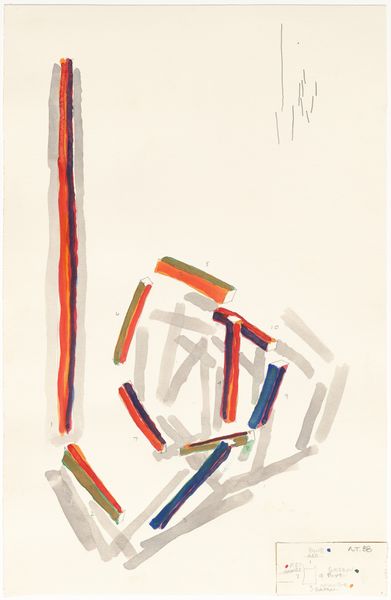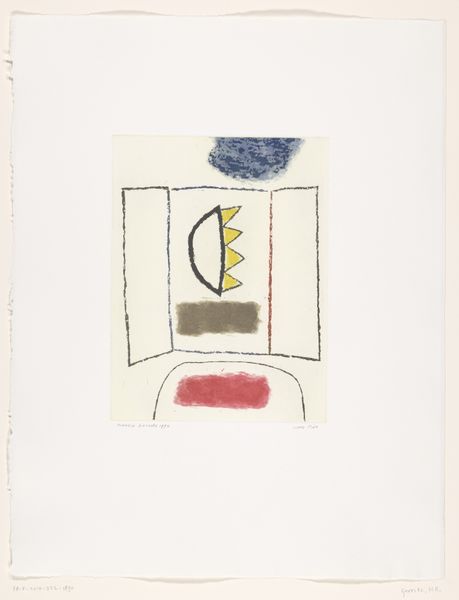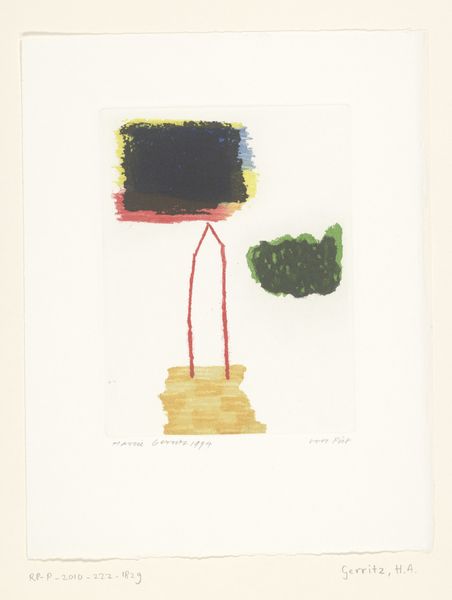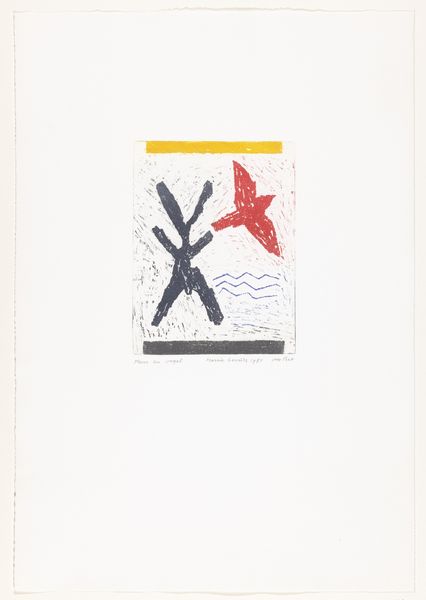
drawing, watercolor
#
drawing
#
landscape
#
river
#
watercolor
#
geometric
#
mountain
#
abstraction
#
watercolour illustration
Dimensions: height 658 mm, width 502 mm, height 335 mm, width 257 mm
Copyright: Rijks Museum: Open Domain
Curator: This is Harrie A. Gerritz's "Bergen en rivier," or "Mountains and River," a drawing made with watercolor in 1994. Editor: It's deceptively simple. The first thing that strikes me is the almost childlike quality of the imagery—those two pointy mountains and the squiggly river. There's a deliberate primitivism here that I find intriguing. Curator: Indeed. Gerritz’s work often engaged with simplifying complex forms, responding to movements like CoBrA that emphasized spontaneous, uninhibited expression. Think about the broader context of the 1990s, the art world moving away from the spectacular towards more introspective and often deliberately unrefined aesthetics. Editor: Right, a sort of shedding of artifice. I also notice how the colors are used. They're quite muted and earthy, but placed in a way that’s not really representational. The red "cloud" hovers somewhat menacingly. I wonder about environmental issues and whether a statement is being made on ecological anxieties in the late 20th century? Curator: That’s a strong reading. While Gerritz wasn’t explicitly political in his art, the abstracted landscapes often reflect a concern for the environment that was growing at the time. Also, it is worth remembering that his work appeared in museum exhibitions, making art more inclusive, more reflective of society. Editor: It raises questions, definitely. It reminds me of Agnes Martin's minimalist landscapes but with a sort of wry commentary on idealized nature. The directness allows a reading of nature under threat. Or, perhaps, this is a post-industrial landscape of re-emergence? Curator: An interesting interpretation! There is also a conversation about authorship, the artwork can exist for more viewers now and invite discussion from different voices. The beauty here is the space for multiple narratives to arise. Editor: Well, that’s precisely what makes it so compelling. Even such an apparently straightforward piece demands that we consider the deeper currents that may ripple beneath its surface. Curator: Absolutely, it’s through works like this that art institutions show there’s value in questioning both the object and the social circumstances surrounding its making.
Comments
No comments
Be the first to comment and join the conversation on the ultimate creative platform.

